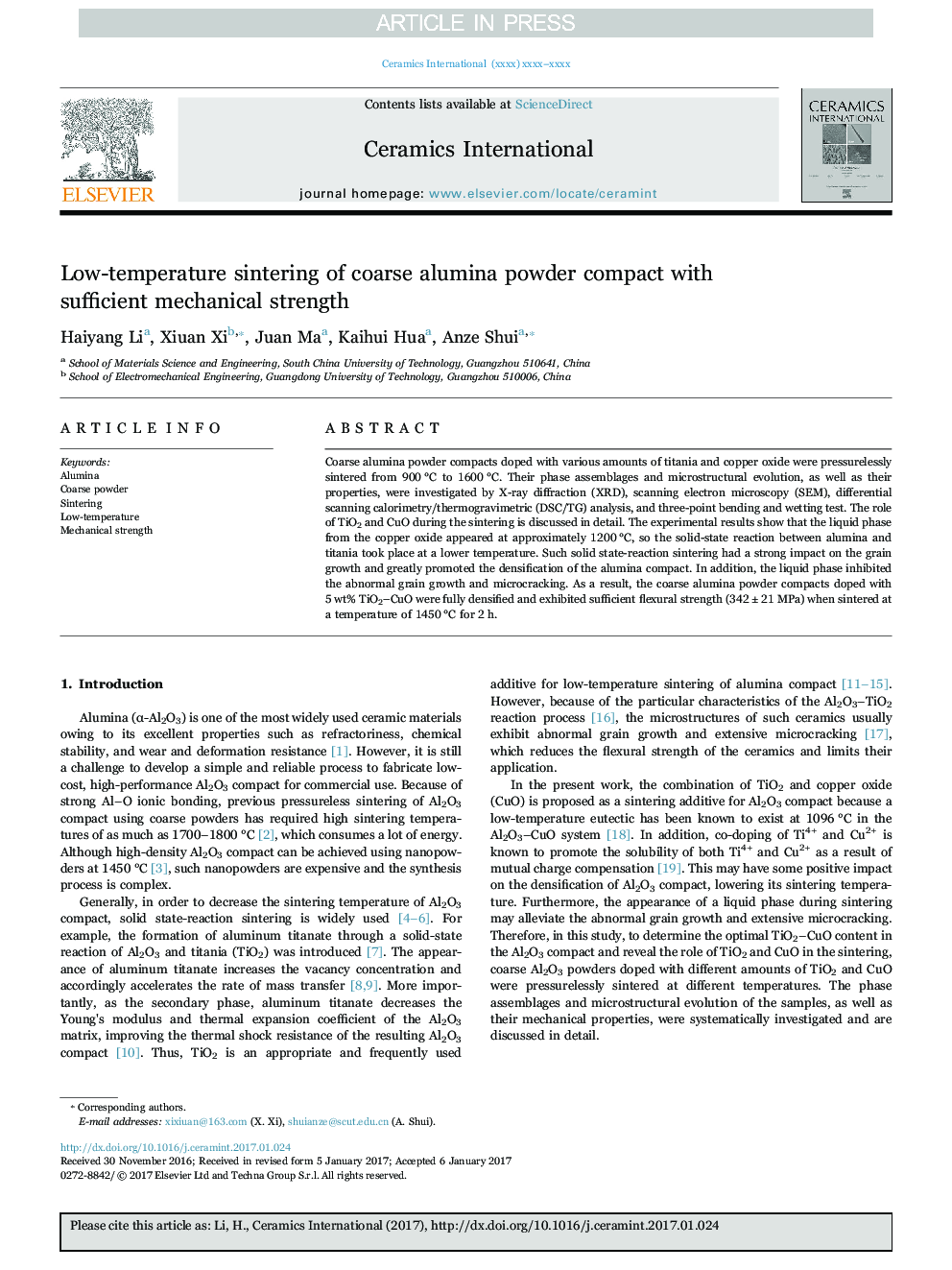| Article ID | Journal | Published Year | Pages | File Type |
|---|---|---|---|---|
| 5438646 | Ceramics International | 2017 | 7 Pages |
Abstract
Coarse alumina powder compacts doped with various amounts of titania and copper oxide were pressurelessly sintered from 900 °C to 1600 °C. Their phase assemblages and microstructural evolution, as well as their properties, were investigated by X-ray diffraction (XRD), scanning electron microscopy (SEM), differential scanning calorimetry/thermogravimetric (DSC/TG) analysis, and three-point bending and wetting test. The role of TiO2 and CuO during the sintering is discussed in detail. The experimental results show that the liquid phase from the copper oxide appeared at approximately 1200 °C, so the solid-state reaction between alumina and titania took place at a lower temperature. Such solid state-reaction sintering had a strong impact on the grain growth and greatly promoted the densification of the alumina compact. In addition, the liquid phase inhibited the abnormal grain growth and microcracking. As a result, the coarse alumina powder compacts doped with 5 wt% TiO2-CuO were fully densified and exhibited sufficient flexural strength (342±21 MPa) when sintered at a temperature of 1450 °C for 2 h.
Related Topics
Physical Sciences and Engineering
Materials Science
Ceramics and Composites
Authors
Haiyang Li, Xiuan Xi, Juan Ma, Kaihui Hua, Anze Shui,
